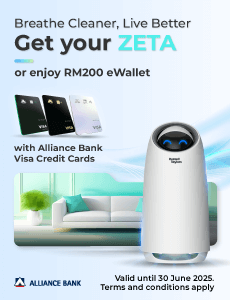Is Having Too Many E-Wallets A Problem?

Table of Contents
We all hate digging through our pockets/purses/wallets for cash; all the while holding up an ever-growing queue at the store. If there was an easier way, we would definitely take it.
In a sense, there is a solution. E-wallets let you pay through an app, which means your smartphone is really all you need when you go shopping.
According to a report by The Star, Malaysia’s smartphone penetration was recorded at 70% in the third quarter of 2017 and is expected to hit 100% at the end of 2018. A number that has encouraged more than a few companies to hop on the e-wallet train. At the time of writing, there are 39 non-bank e-money license holders; each already working on or has released an e-wallet.
However, this has lead to a considerable glut of e-wallets in Malaysia. So what does that mean for consumers?
Choice overload?
At a quick glance, there are over 20 e-wallets currently available in Malaysia. Each of them with their own perks and benefits.
There are both big and small players in the game like GrabPay, WeChat Pay, Boost, Fave, Sarawak Pay, Kiple, Bayar, Samsung Pay, Lazada wallet, vcash, BigPay and more.
So many choices in the market encourage competition, so it can only be a good thing, right? Well…
There are two ways to look at it. First of all, a healthy competition bodes well for consumers as all the different e-wallet providers strive to differentiate themselves with perks, rewards, and cash back.
However, it can also backfire. Too many options can turn off interest – psychologists refer to this phenomenon as “choice overload”. A situation where people avoid making a decision when presented with too many potential outcomes. Which e-wallet gives you the best discounts? What if you want cash back? How about loyalty card storage?
In the end, consumers are more likely to carry on with a technology they are already familiar with – credit cards and debit cards.
But.. but… I already have a credit card
E-wallets are not just competing against one another, but also credit and debit cards.
Malaysians have long been using cards to make purchases and online banking to pay bills and utilities, and it has worked seamlessly. So why would they desert a system they are already familiar with and make the extra effort to learn something new.
The introduction of contactless payment technology (Visa Paywave and Mastercard PayPass) also put credit cards on par with e-wallet convenience.
That is not to say that e-wallets won’t work in Malaysia. A lot of urbanites are already toying with different e-wallets to see what’s working for them. Having said that, it’s also worth noting that e-wallets are mainly prevalent among those who are tech-savvy.
Can I use my e-wallet wherever I go? Not really.
There is no uniformity in terms of e-wallet payment technology. You are faced with a series of arcane terms like QR codes, MFT, NFC, RFID, and the like.
That’s not even considering that there is a challenge in determining if a store will accept your e-wallet. For example, the Touch n Go e-wallet can be used at all Baskin Robbins and Dunkin Donuts outlets, but only one Big Apple Donuts location.
Every e-wallet caters to a list of different merchants – and we’re sure you don’t want to be Googling “list of X e-wallet merchants” every time you head out.
Opening new opportunities
For every person that finds e-wallets confusing, there is another that find it exciting and extremely convenient. The case of this exists in China, where the entire country has already abandoned the idea of cash.
This, in turn, has changed how stores do business. Alibaba has its Hema chain of supermarkets; all of which turn the entire experience of shopping on its head.
Imagine going into a store, scanning what you want with an app, and then walking out. All your shopping will be delivered to your home within half an hour. No shopping bags, no baskets, no cash, no cashiers.
E-wallets also make it really easy for consumers to track their spending as the apps keep track of your payment history. This not only includes what you spend but also any amounts that you happen to lend to friends or transfer for whatever reason.
That could help you monitor where your money is going and also bring you closer to your financial goals. Aside from that, you’ll also be saving money from all the cash back and reward points.
The government wants you to use e-wallets
Regulations are being set up to address some of the e-wallet growing pains. Bank Negara Malaysia has the goal of deploying an Interoperable Credit Transfer Framework; a system that will unify all e-wallets under a single system.
Sure, there is no deadline for the ICTF; but BNM is already working on getting it off the ground.
While Malaysians might be slow to adopt this new form of digital payment, its grip is becoming undeniable. You’ve probably already registered for an e-wallet out of curiosity at some point in the last few months, and you’re almost certainly already registered with GrabPay.
So while there are challenges facing e-wallets, we are all in this for the long run. It’s just a matter of waiting for the technology to become more convenient for everyone. Then we can put an end to the days of impatient strangers waiting for us to find that RM5 note we swore was in this pocket just a minute ago.











